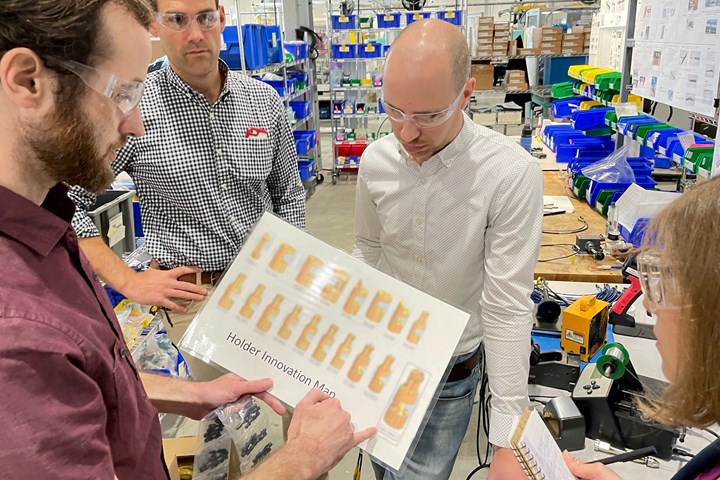In 3D printing, “assembly consolidation” usually refers to a part’s design — that is, the decision to combine multiple components into a single 3D-printable part. This approach has potential benefits in terms of reduced labor, faster speed in manufacturing and sometimes even improved durability. However, there is a tradeoff: Larger parts have implications for machine utilization and efficiency. A larger, more complex part may take longer to produce, cost more and occupy a large footprint in the build envelope. That is why Zeeland, Michigan, manufacturer Extol has found that there are often very compelling reasons to split, rather than combine, parts that will be 3D printed. The company has been in operation more than 35 years as a supplier of plastics joining technology, services and systems, and understands well the various ways of assembling plastic parts together. The ability to join parts that were printed in pieces can make for far more efficient 3D printing builds. See an example and learn more in this video.
Learn More: Joining Product Development and Production Via 3D Printing
Manufacturing technology supplier Extol has always served customers who are producing polymer parts. Now, it is making some of those parts in-house through 3D printing, providing new options ranging from functional prototyping into bridge production and beyond. READ MORE
Transcript
I’m Stephanie Hendrixson with Additive Manufacturing Media. I'm here at Extol in Zeeland, Michigan. Extol is an additive manufacturer. They use several Multi Jet Fusion printers from HP to produce parts for their own internal use, as well as external customers.
But the main part of their business is joining together plastics, and that gives them an interesting perspective on additive manufacturing. We talk all the time in additive about assembly consolidation and the use of 3D printing to combine different parts together into one single print. And that's not always the best way to do things.
So because Extol has this equipment, they have this understanding of different ways to join plastic parts together. They take things that look like this and divide them into different pieces and then assemble them back together after the printing process.
So this is a custom scoliosis brace. It's produced for a customer called Fited, and it is 10 to 15 parts. Each one of these is made custom printed in pieces because those different pieces can nest together more easily than several large components like this. This component is printed from polypropylene. It is then ultrasonic welded together.
So this is mass customization, a production product that is made through additive but not assembly consolidation in the way that we typically think of it.
Related Content
-
Drones Take Flight with Metal and Polymer 3D Printed Parts: The Cool Parts Show Bonus
Drones produced by Cobra Aero now incorporate many 3D printed parts made through laser powder bed fusion and Multi Jet Fusion processes.
-
How to Build 10,000+ Shot Molds in Hours
Rapid tooling isn’t so rapid when it takes days to 3D print a metal mold, and then you still must machine it to reach the necessary tolerances. With Nexa3D’s polymer process you can print a mold in hours that is prototype or production ready and can last for more than 10,000 shots.
-
3D Printing with Plastic Pellets – What You Need to Know
A few 3D printers today are capable of working directly with resin pellets for feedstock. That brings extreme flexibility in material options, but also requires greater knowledge of how to best process any given resin. Here’s how FGF machine maker JuggerBot 3D addresses both the printing technology and the process know-how.


.jpg;width=70;height=70;mode=crop)














